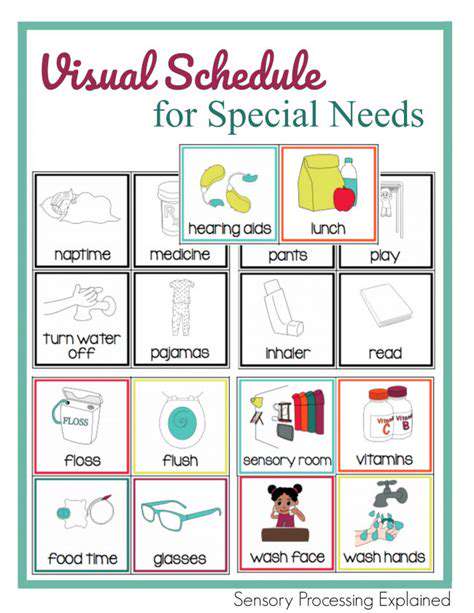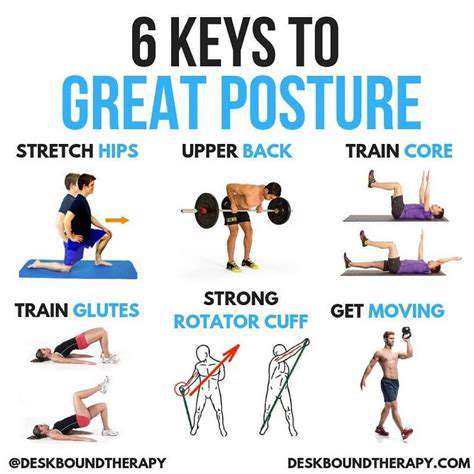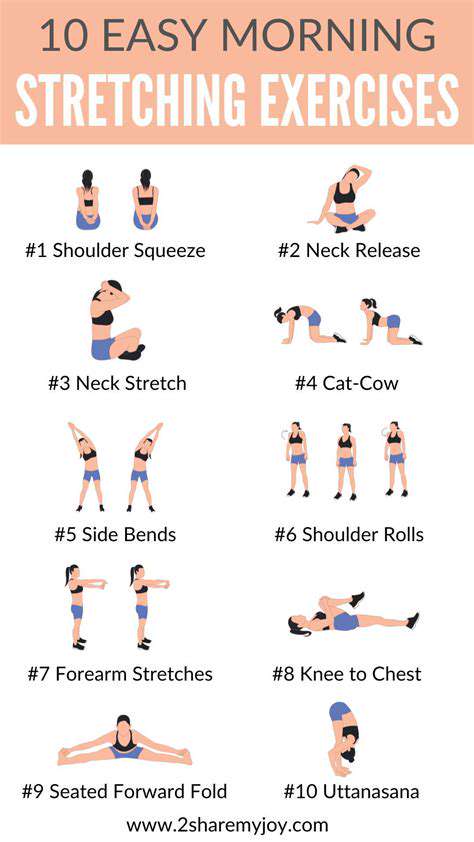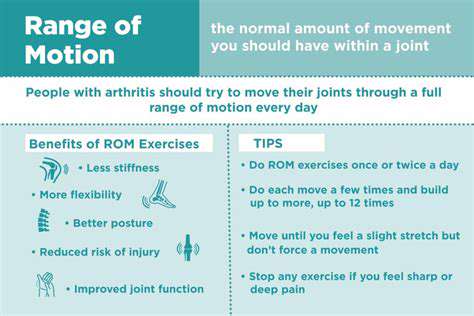Adapting Your Walking Routine for Different Fitness Levels
Understanding Your Body
Before embarking on a walking journey, it's crucial to understand your body's current limitations and capabilities. This involves honestly assessing your physical condition, including any existing injuries or health concerns. A consultation with your doctor is highly recommended, especially if you have any underlying medical conditions. They can provide personalized advice on safe and effective exercise routines, taking into account any specific needs or restrictions. This proactive approach ensures you build a solid foundation for your walking routine, preventing potential setbacks or injuries down the road. Knowing your starting point will help you set realistic goals and gradually increase the intensity and duration of your walks.
Identifying any pre-existing conditions or injuries is paramount to a safe and effective walking program. A doctor's evaluation can reveal potential limitations or areas that require special attention, such as joint pain or cardiovascular issues. This information allows you to tailor your walking routine to minimize risk and optimize your well-being. Moreover, understanding your body's current fitness level will help you create a plan that's both challenging and achievable, facilitating progress without pushing yourself beyond safe limits.
Setting Realistic Goals
Establishing achievable goals is essential for maintaining motivation and preventing frustration. Instead of aiming for marathon-level distances or intense paces right away, focus on gradual improvements. Start with short, manageable walks and gradually increase the duration and intensity over time. This progressive approach allows your body to adapt and prevents injuries. Consistency is key, so aim for regular walks, even if they're just for 15-20 minutes initially. Remember, progress, not perfection, is the key to long-term success.
Setting realistic goals is crucial for long-term adherence to your walking routine. Don't try to do too much too soon. Begin with short walks at a comfortable pace and gradually increase the duration and intensity as your fitness improves. This approach fosters a positive experience and builds confidence in your ability to achieve your goals. Celebrate small victories along the way, recognizing and rewarding yourself for your progress. This positive reinforcement will keep you motivated and engaged in your walking journey.
Choosing the Right Walking Gear
Appropriate footwear is paramount for comfort and injury prevention. Invest in comfortable walking shoes with good arch support and cushioning. Proper fitting is essential to avoid blisters and foot pain. Consider breathable clothing that allows for proper ventilation, especially during warmer months. Layers are recommended to adjust to changing temperatures. Accessories like a water bottle and a comfortable backpack for carrying essentials can enhance your experience.
Mastering Proper Walking Form
Maintaining good posture during your walks is crucial for minimizing stress on your joints and maximizing efficiency. Keep your back straight, shoulders relaxed, and core engaged. Engage your leg muscles, pushing off from the heel and rolling through to the toes. Maintain a consistent rhythm and avoid overstriding. Proper form not only prevents injuries but also ensures you reap the maximum benefits from your walking routine.
Incorporating Walking into Your Lifestyle
Integrating your walking routine into your daily schedule can significantly impact its effectiveness and enjoyment. Schedule specific times for your walks, treating them as important appointments. Look for opportunities to walk during your lunch break, commute to work, or even incorporate walking into errands. Making walking a part of your daily routine will make it more sustainable and enjoyable. Create a supportive environment by engaging with others or joining a walking group to stay motivated and engaged.
Modifying Your Routine for Specific Needs

Understanding the Importance of Routine Modification
Modifying your routine can be a powerful tool for achieving personal and professional goals. A well-defined routine can streamline tasks, reduce stress, and foster a sense of accomplishment. However, as circumstances change, your routine may need adjustment to remain effective and beneficial. Recognizing the need for change is the first step towards creating a more productive and fulfilling life.
Often overlooked is the impact of routine on mental well-being. A stagnant routine can lead to feelings of boredom and monotony. By intentionally making adjustments, you can inject novelty and excitement into your daily life, leading to increased motivation and a renewed sense of purpose.
Identifying the Reasons for Modification
The first step in modifying your routine is pinpointing the exact reason for change. Are you experiencing burnout? Do you need to incorporate new responsibilities? Or perhaps you simply want to try a new approach to enhance productivity? Understanding your motivations will guide your decision-making process and ensure that the adjustments align with your long-term goals.
Taking the time to reflect on your current routine and identify areas for improvement is crucial. Analyze what works well and what doesn't. Identify specific tasks that are causing friction or hindering your progress. This self-assessment will pave the way for targeted and effective modifications.
Strategies for Implementing Changes
Implementing changes to your routine doesn't have to be overwhelming. Start with small, manageable steps. Instead of trying to overhaul your entire schedule at once, focus on incorporating one or two new habits each week. This gradual approach allows your body and mind to adapt more easily and increases the likelihood of long-term adherence.
Consider utilizing tools and resources to support your new routine. These could include planners, calendars, or even dedicated apps. Tracking your progress can provide valuable insights into what's working and what needs adjustment.
Planning for Potential Roadblocks
Anticipating potential roadblocks is an essential aspect of successful routine modification. Life throws curveballs, and unforeseen circumstances can derail even the best-laid plans. Having a backup plan or alternative strategies in place will help you navigate these challenges with greater ease and resilience.
Be prepared for setbacks. It's completely normal to encounter obstacles when implementing changes. The key is to approach these challenges with a flexible mindset and a willingness to adjust your plan as needed. Don't be discouraged by temporary setbacks. Instead, view them as opportunities for learning and growth.
Evaluating the Effectiveness of Adjustments
Regularly assessing the effectiveness of your routine modifications is crucial for long-term success. Track your progress, identify areas where you're excelling, and pinpoint areas that need refinement. By actively monitoring your adjustments, you can fine-tune your routine to maximize its impact and optimize your overall well-being.
Maintaining Motivation and Consistency
Maintaining motivation and consistency is vital for sustaining any significant lifestyle change. Celebrate milestones, no matter how small. Reward yourself for sticking to your new routine, and acknowledge your progress. Consistency is key to achieving lasting results, and rewarding yourself for your efforts will keep you motivated and engaged in the process.
Seek support from others. Sharing your goals and challenges with friends, family, or support groups can provide valuable encouragement and accountability. Remember that you're not alone in this journey, and having a support system can significantly impact your success.
Staying Motivated and Safe During Your Walks

Staying Focused on Your Goals
Maintaining motivation is crucial for achieving any significant goal. Setting realistic and achievable milestones is a key component of this process. Breaking down large projects into smaller, manageable tasks can make the overall goal seem less daunting and more attainable. This approach fosters a sense of accomplishment with each step forward, which is essential for sustaining motivation and preventing feelings of overwhelm.
Prioritizing Self-Care
Taking care of your physical and mental well-being is paramount to maintaining motivation and overall safety. Adequate sleep, balanced nutrition, and regular exercise contribute to a positive mental state. These elements are critical for sustained energy levels and cognitive function, allowing you to tackle challenges with a clear mind.
Building a Supportive Network
Connecting with supportive individuals can significantly impact your journey. Whether it's a friend, family member, or mentor, having someone to confide in and share your experiences with can provide encouragement and perspective during challenging times. This network offers a crucial support system, helping you navigate obstacles and stay motivated. A supportive network can provide accountability and encouragement, which are essential for staying on track.
Overcoming Challenges
Life inevitably presents obstacles, and acknowledging these challenges is the first step towards overcoming them. Developing coping mechanisms to address setbacks is vital. Proactively identifying potential roadblocks and creating strategies to address them can significantly reduce the impact of unexpected problems. Embracing flexibility and adaptability is key to navigating life's inevitable curveballs.
Understanding Your Limits
Recognizing your personal limits and boundaries is an essential aspect of safety and well-being. Pushing yourself too hard can lead to burnout, stress, and reduced performance. It's essential to acknowledge your limitations and adjust your expectations accordingly. This self-awareness allows you to make informed decisions that prioritize your overall well-being.
Seeking Help When Needed
Don't hesitate to reach out for help when you need it. Whether it's seeking professional guidance from a therapist or counselor, or leveraging support systems within your community, acknowledging when you need additional support is a sign of strength. This demonstrates a commitment to your well-being and allows for a more comprehensive approach to navigating challenges. Remember, reaching out is a sign of strength, not weakness.
Creating a Safe Environment
Establishing a safe environment, whether physical or virtual, is critical for maintaining a positive and productive mindset. A safe space fosters a sense of security and allows for focused effort. This could involve creating a dedicated workspace, setting clear boundaries, or choosing supportive online communities. Creating a safe environment is a proactive step toward achieving your goals and maintaining your well-being. Prioritizing your safety and security is essential for your overall success and well-being.











